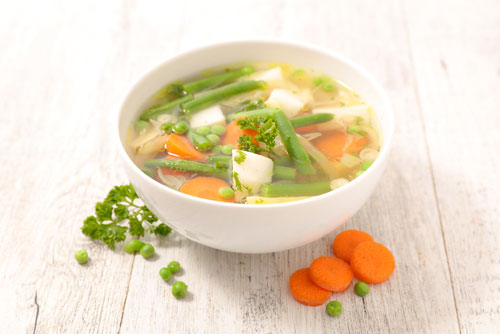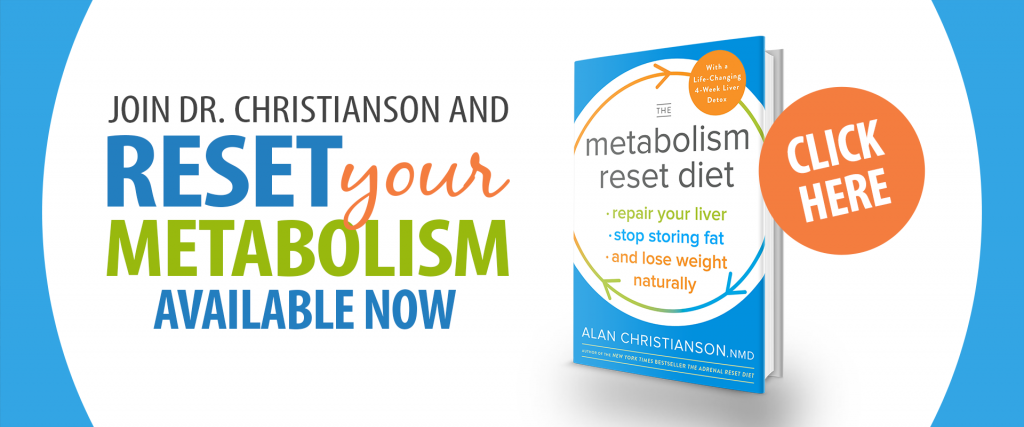In recent years, bone broth has experienced a surge in popularity, but is it really that healthy for you? Is the science strong behind the alleged benefits of joint health and gut healing? Let’s dive into the details of bone broth, and what you can do about alternatives.
- Have any questions?
- 480-767-9018
- support@in-goodhealth.com

Why Fad Diets Work (Sometimes)
November 5, 2018
Gluten-Free: What Does That Really Mean?
November 19, 2018
Why Fad Diets Work (Sometimes)
November 5, 2018
Gluten-Free: What Does That Really Mean?
November 19, 2018What Is Bone Broth?
Bone broth is a liquid made by boiling the following:
- Meat
- Vegetables
- Herbs
- Spices
It is different from a stock, although both stock and bone broths come from bones and meat. Bone broth may also come from boiling for as long as 16-24 hours. Whereas stock may be ready to use in only 45 minutes to 2 hours.
It’s as simple as that, bone broth cooks for longer. This way, the collagen in the bones can break down and provide a thick, gelatinous texture (and can, allegedly, add nutritional value).
It’s recommended by a wide range of health experts on the basis of its supposed nutrients. It is also thought to be a food consumed by traditional cultures, something we all have in our roots.
Nutritionists point to the benefits of bone broth for:
- Gut health
- Food Intolerances (Read: The ultimate guide to food intolerances)
- Allergies
- Joint Health
- Weight Loss
- Sleep (Read: Insomnia, when you’ve tried everything and still can’t sleep)
- Inflammation
- Immunity
Bone Broth Toxicity: Is the Danger Real?
In 2013, bone broths were found to be more toxic than other soups (Read: The complete guide to testing your body for toxins).
A small, blinded, controlled study on the lead content of three different organic chicken broths showed that lead concentrations were higher in broths made with bones1.
The control was tap water, which contained just 0.89 micrograms per liter (ug/L). Whereas “chicken-bone broth” contained 7.01 ug/L. Broth made from chicken meat, but no bones, contained 2.3 ug/L. Broth made from skin and cartilage off the bone contained the most: 9.5 ug/L.
Key Insight: All the broths were cooked in the same cookware for the same amount of time. The same water source was used for each.
The Weston A. Price Foundation, an organization that openly recommends bone broth, looked at the study. It noted that if the study was valid, there is plenty of reason for concern. On its website, it says of the study:
“Lead, after all, is a neurotoxin that can cross the placenta and blood-brain barrier.
“It is associated with abnormal fetal development as well as a very long list of neurobehavioral disorders and diseases in children and adults including ADHD, violence, social withdrawal, depression, substance abuse, and Parkinson’s.
“Lead may be the oldest toxic agent known. Its dangers were known to the ancient Greeks and Romans, and it has been heavily studied by researchers of every era since.”
The Study In Context
But let’s put the study in context: the EPA limit for lead in tap water is 15 ug/L, so even the most contaminated broth made with skin and cartilage off the bone was still within “acceptable limits” according to our country’s standards.
Another study on the toxic metal content of animal bone broths2. This time it was pig bones, and the highest lead levels found reached 9.01 ug/L. And yet, these levels were of “minimal risk.”
Bottom Line: In the same study, calcium and magnesium levels were also found to be minimal, representing less than 5% of the daily recommended levels.
So Does Bone Broth Really Have Any Nutritional Benefits?
Bone Broth’s Mineral Content
Unfortunately, a lot of the information we have on bone broth nutrition is based on very old studies (from close to 100 years ago)3.

Let’s consider the results.
One study from 1934 that is cited a lot in bone broth articles online found 45 milligrams of magnesium in 1 liter of their lab broth. Which had the highest value for all nutrients measured when compared with commercial broth and kitchen broth.
Key Insight: That’s 11.25% of the daily recommended amount by today’s standards for men and 14.5% for women. It’s unlikely that you’d consume a liter of broth per day, so this is significant.
How about iron? The lab broth contained 4.1 milligrams of iron per liter. That’s a little better, especially if you’re a man, considering the RDA for iron is 8 mg for men and 18 mg for women. We’re looking at 51.25% if you’re a man and almost 23% if you’re female.
Still, how much bone broth can one consume? Some recommend drinking as much as you can, and 8 ounces as a minimum, which would be around a quarter of a liter.
With that dose, you’d receive 12.8% of your iron if you’re a man, and less than 6% if you’re a woman. Not a considerable amount.
Weston A. Price Foundation on Calcium
Even the Weston A. Price Foundation disputes its calcium content. It states:
“Unfortunately, it is a myth that broth is high in calcium. Indeed in 1934, Archives of Disease in Childhood reported “extremely low” levels of calcium even when the recipe included wine or vinegar to help pull it from the bones.
“Today the labels of two excellent bone broths in the marketplace, Saffron Road and Chef Flavor, report the levels of calcium per one cup serving at 0 percent and 4 percent of the RDA, respectively.
“Although WAPF plans to have some other quality broth tested, we have no reason to assume the results will be markedly different. The oft-heard claim that a cup of good bone broth has as much calcium as a cup of milk appears to have no basis in fact.”
Bone Broth’s Protein Content
A 2017 study found that although bone broth does offer increased protein content when compared with regular traditional chicken broth, it still only contains one or fewer of the essential amino acids we need for optimum health4.
Many commercial brands of chicken bone broth contain around an average of 9.5g of protein per 240 ml serving4. The RDA is 0.8g per kilogram of body weight and goes up the more active you are.
However, the amino acids in bone broth mainly come in the form of glycine, alanine, glutamic acid, proline and hydroxyproline5.
Here are the essential amino acids we need to stay healthy:
- Histidine
- Isoleucine
- Leucine
- Lysine
- Methionine
- Phenylalanine
- Threonine
- Tryptophan
- Valine
Bottom Line: You cannot find one of the essentials in any real quantities in bone broth. So it wouldn’t be a good idea to look to it as a good protein source, though it could be complementary. Neither bone broth nor collagen is a complete protein food source.
The Collagen Content
Bone broth may not be the best source of collagen, either.
A very recent study that compared supplements with different bone broths found that the collagen levels in bone broths varied widely, but the supplements consistently supplied higher levels of collagen, and sometimes as much as four times as much amino acid content6.
A Popular But Potentially-Flawed Alternative: Chondroitin And Cancer
However, it is important to choose an alternative supplement with care. One of the most widely-available supplements for joint issues, for example, is chondroitin sulfate, which reduces the activity of the enzymes and substances that break down collagen in the joints.
Key Insight: Unfortunately, chondroitin has been linked to several different types of cancer, including cancer of the brain7,8.
The Truth About Bone Broth
Unfortunately, the jury is still very much out on bone broth. If you still want to consume it, store-bought broths are worth avoiding due to their inferior nutrient levels.
Instead, you should consider making your own with the most appropriate cookware and spring water, plus the highest-quality, organic ingredients.
It’s recommended to support your joints and gut with supplements and anti-inflammatory foods instead of bone broth, as well as making sure to meet the recommended daily allowance of the essential nutrients your body needs to prevent deficiency and ill-health.
1. https://www.ncbi.nlm.nih.gov/pubmed/23375414
2. https://www.ncbi.nlm.nih.gov/pmc/articles/PMC5533136/
3. https://www.ncbi.nlm.nih.gov/pmc/articles/PMC1975347/?page=6
4. https://www.jrnjournal.org/article/S1051-2276(17)30181-4/fulltext
5. https://www.ncbi.nlm.nih.gov/pubmed/28687386
6. https://www.ncbi.nlm.nih.gov/pubmed/29893587
7. https://www.ncbi.nlm.nih.gov/pubmed/25197555
8. https://www.ncbi.nlm.nih.gov/pubmed/24762654

Written by Dr. Roz Ranon of Integrative Health. Dr. Roz Ranon, NMD is an Arizona board-certified Naturopathic Physician practicing with Dr. C at Integrative Health with a focus on Hashimoto’s Thyroiditis.

P.S. Whenever you are ready, here is how I can help you now:
- Schedule a Thyroid Second Opinion with me, Dr. C, Click Here for Details
- Need help to choose supplements? Click ‘Help Me Decide Here'
- Get my top books Here
Dr. Alan Glen Christianson (Dr. C) is a Naturopathic Endocrinologist and the author of The NY Times bestselling Hormone Healing Cookbook, The Metabolism Reset Diet, and The Thyroid Reset Diet.
Dr. C’s gift for figuring out what works has helped hundreds of thousands reverse thyroid disease, heal their adrenals, and lose weight naturally. Learn more about the surprising story that started his quest.







